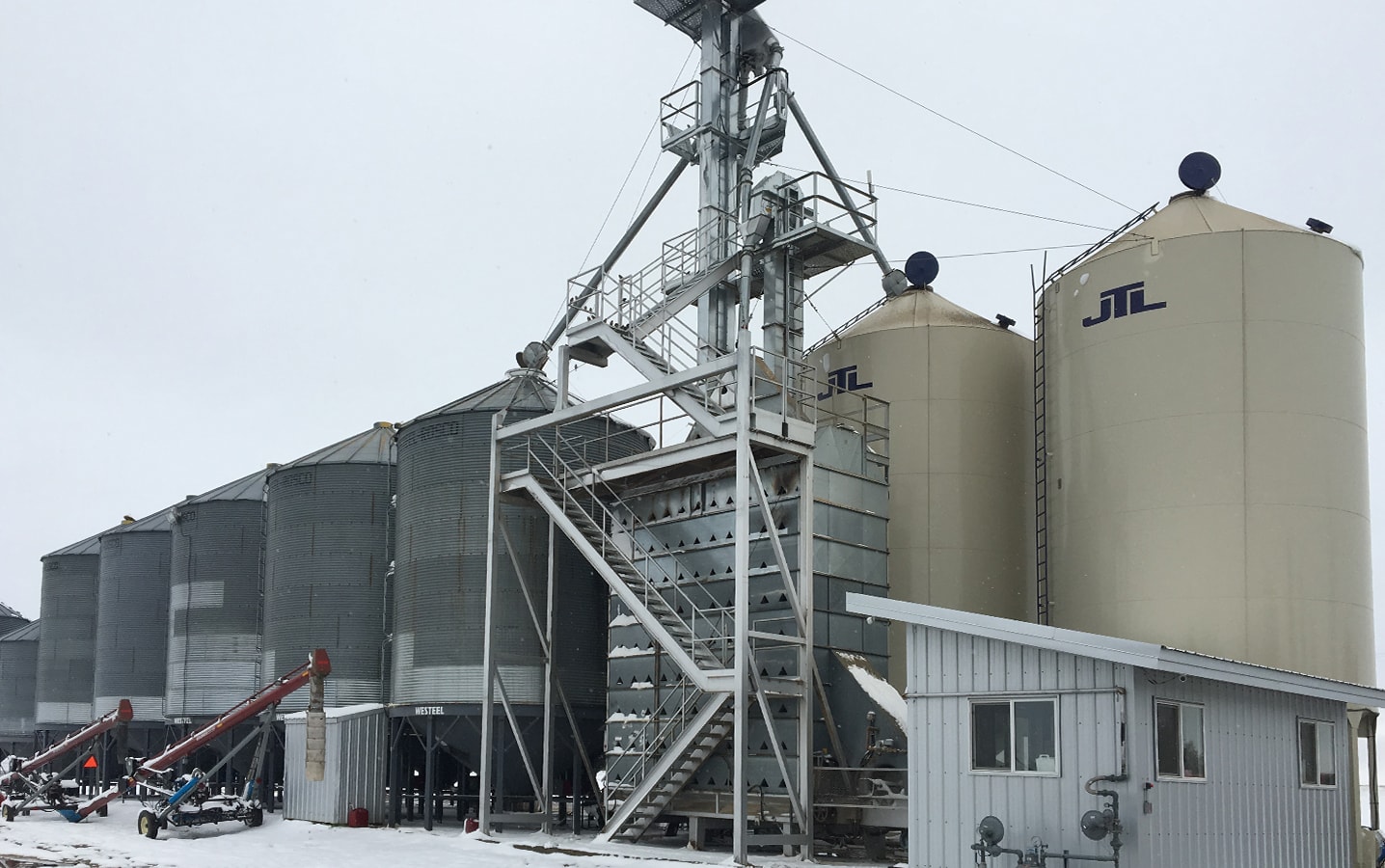Benefits and risks with a stand-alone dryer
Any kind of drying system can offer substantial benefits to farmers in wet harvest years.
“Having the capacity to do significant drying out of the field, whether with high temperature dryers, natural air drying or supplemental heat, allows farmers to remove the environmental wildcard,” says Angela Brackenreed, agronomy specialist with the Canola Council of Canada (CCC).
She adds that drying capability could improve harvest logistics and potentially reduce resource requirements.
“You could start harvesting at a higher moisture target, and once you get to the final fields, they’re closer to dry. This puts less strain on an operation’s harvesting capacity,” Brackenreed says.
She cautions, however, that there’s risk and cost involved with taking off high moisture grain. That includes a significant cost and carbon footprint attached to drying a lot of bushels, she says, but points out farmers are budgeting based on producing high-yielding No.1 grade canola. “There’s always risk of severe weather degrading quality and inducing significant yield loss.”
Stand-alone driers
Farmers looking for quick drying of their grains in significant quantities may wish to consider setting up high-temperature driers.
“Usually when you’re talking about a stand-alone drier, you’re talking about a column drier with drying temperatures from 150°F to 220°F [65°C to 105°C], depending on drier design,” explains Ken Hellevang, agricultural engineering specialist with the North Dakota State University Extension Service.
By going with that higher heat and higher air flow rates associated with column driers, farmers are able to dry much more rapidly,
he says.
Hellevang adds that high temperature driers aren’t limited in the maximum moisture content that they can handle: “So whether it’s grain coming in at 15 or 20 per cent moisture, we can safely and economically dry that with a stand-alone drier.”
Specific canola recommendations
The Canola Encyclopedia says canola can be dried at up to 82°C, and that lower temperatures should be used when canola is damp (over 12.5 per cent moisture) or when it is to be stored for over six months.
The CCC advises that green weed seeds and canola stems and pods can interfere with canola’s passage through a dryer, and that at high drying temperatures, stationary canola may catch fire. Also, canola seeds can ignite when passed by the burner.
“Once a fire gets started, with it being an oil crop, it gets to be more difficult to extinguish that fire,” notes Hellevang.
He recommends periodical cleaning of driers, as well as monitoring to ensure good flow. “This is probably more of an issue with continuous-flow style driers than a batch drier,” Hellevang adds.
CCC also recommends cleaning canola seed to remove light or fine material before drying, using wind deflectors to prevent drawing airborne material through the burner, avoiding over-drying the seed and leaving off the burner when putting canola through on warm, sunny days.
“Resistance to airflow is an issue with in-bin drying, but we don’t generally have to worry about it in high temperature
stand-alone driers.”
Electrical requirements
Among the advantages of high temperature drying is that, typically, fan sizing and electrical requirements end up being very minimal as a percentage of heat and energy input.
“With a stand-alone drier, we’re typically looking at the electricity cost being less than five per cent of the operating cost,” says Hellevang.
Many of the larger stand-alone driers and bin driers today are going with three phase fans, he says. With single phase, farmers will usually be limited to 15 horsepower size, but three phase can go to much larger sizes. Many producers will use a phase converter so they can still be hooked up to a single-phase electrical distribution system.
Mixing and airflow
Another benefit to stand-alone driers is they don’t have the kind of issues bin driers can have where drying grain needs to be mixed.
“Resistance to airflow is an issue with in-bin drying, but we don’t generally have to worry about it in high temperature stand-alone driers,” says Hellevang.
With stand-alone driers, there used to be concerns about grain not mixing well as it came down through the drying column, but he says that today, most of the driers will have some method of mixing the grain in that column.
Some set-ups will use grain diverters, others grain inverters or augers at the bottom, so the grain on the inside of the column that would be exposed to the hotter air is moving at a much more rapid pace than grain on the outside, Hellevang says.





